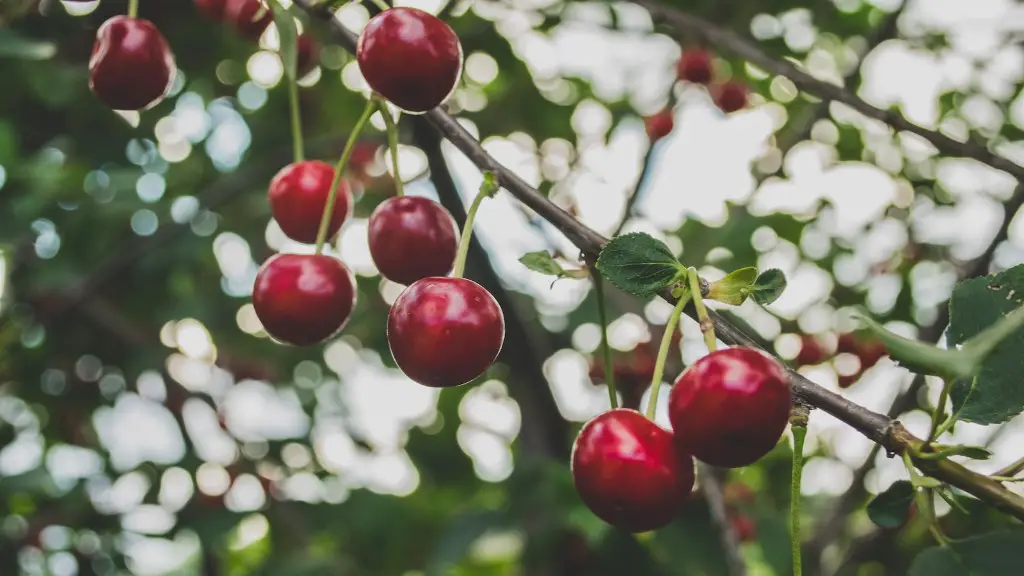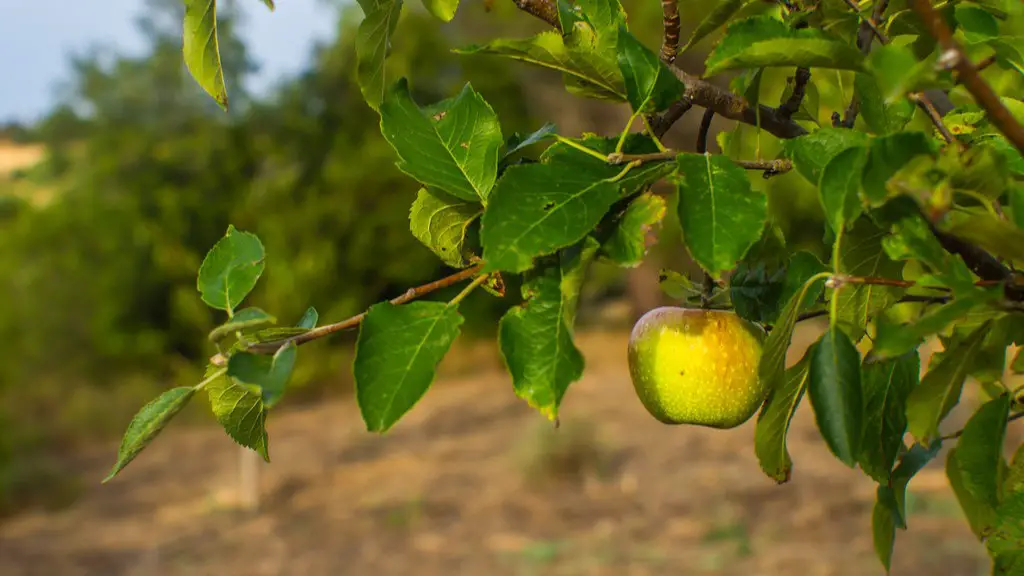Apple trees are prone to fungal diseases, which can be damaging and sometimes deadly. Treatment of the fungus is necessary to save the tree from further damage or eventual death. Fortunately, there are various methods of treating apple tree fungus, depending on the type and severity of the infection.
One of the first steps in treating apple tree fungus is to identify the affected area. The affected areas may show signs of wilting, yellowing of the leaves, blackening of the leaves and branches, and dieback of affected limbs. Once the affected areas are located, it is important to remove any dead or damaged branches to stop the spread and further infection.
The second step is to apply a fungicide. Fungicides come in many forms, including liquid, granular, and wettable powders. As with any chemical, it’s important to read and follow the directions on the label. Depending on the type of fungus and the severity of the infection, up to three applications may be necessary at 10- to 14-day intervals.
The third step is to drench the tree roots. For severe fungal infections, a drench with a fungicide may be needed to penetrate the root system and provide extra protection. When applying the drench, be sure to evenly distribute it around the tree’s root zone.
Finally, physical removal of affected parts is important in order to prevent the spread of the fungus and promote healthy new growth. Pruning affected limbs is the best practice, as it can help remove visible symptoms while improving air circulation and overall tree structure. Any discarded plant matter should be bagged, sealed, and disposed of properly.
Organic Treatments
Organic treatments can also be used to treat apple tree fungus. This includes using compost, mulch, and other organic matter to increase the fertility of the soil and suppress fungus growth. Proper pruning is also an organic form of treatment as it can improve air circulation and light penetration, as well as prevent the spread of fungus. In some cases, applying a solution of baking soda can help keep the fungus from spreading.
Organic fungicides such as neem oil and horticultural oils can be used for some types of fungi, though it is important to note that these treatments offer protection, not elimination. Applying compost tea or other compost-based products can also provide an extra level of protection against further infection by improving soil quality and providing nutrients that can help the tree recover from the fungus.
Finally, it is important to regularly inspect the tree and its surroundings for signs of fungal activity. This includes looking for black spots or web-like patterns on leaves and bark, as well as checking for wilting of the leaves and other signs of infection. If any of these signs are present, immediate action should be taken to ensure that the tree remains healthy and fungus-free.
Prevention
Proper management and maintenance of apple trees can help to prevent fungal infection. Adequate pruning and thinning can help improve air circulation and light penetration, which can reduce the risk of fungus. Proper watering practices and soil preparation can also help reduce the risk of infection.
Using a regular fungicide spray program and applying it at the right time of year can also reduce the risk of infection. Not all fungicides work for all types of fungus, so it is important to identify the type of fungus before selecting a fungicide. Finally, removing debris and weeds from around the tree can help reduce the risk of fungal infection.
Promote Healthy Growth
In addition to treatment and prevention of apple tree fungus, it is also important to promote healthy tree growth. This includes providing proper fertilizer, such as compost or other organic matter, to the tree’s soil. Compost adds nitrogen, phosphorus, and other essential nutrients to the soil, which can help the tree to thrive. Furthermore, mulch can help keep the roots of the tree cool, which can also help promote healthy growth.
Avoiding over-watering the tree is important, as too much water can create a hospitable environment for fungus growth. If a tree receives too little water, it can become stressed and susceptible to fungal infection. Instead, focus on irrigating the root zone of the tree, which should give the soil the adequate moisture it needs.
Biological Control Measures
Biological control measures, such as beneficial bacteria, can be used to combat apple tree fungus. The beneficial bacteria act as a natural defense system, competing with the fungus and reducing its ability to cause damage. These bacteria can also increase the tree’s overall health and general resistance to infection.
In addition, certain predators can be used to control apple tree fungus. These predators, such as parasitic wasps, can feast on the insects that cause the fungus. If the insect population is kept in check, the risk of fungal damage is significantly reduced.
Finally, beneficial fungi can be used to help combat apple tree fungus. These fungi have been proven to have a beneficial effect on trees, as they can consume some of the same nutrients that fungus needs to survive. Introducing beneficial fungi to the tree environment can help reduce the risk of fungal attack.
Sterilization
In some cases, sterilization may be necessary to remedy a fungal infection. This involves sterilizing affected areas of the tree using steam or heat. This is typically done by using a steamer or burner on a pole, which is pointed into multiple areas of the tree. This method is effective, though should only be attempted by a trained professional, as improper sterilization can cause further damage to the tree.
Another method of sterilization is to spray the tree with a fungicide. This can be effective, though it is important to note that some fungicides have been found to be toxic to beneficial insects. Therefore, it is important to choose a fungicide that is safe for beneficial insects, as well as making sure to read and follow the directions on the label.
Finally, in some cases, the entire tree may need to be removed if the fungus is too severe. Though it is often a last resort, tree removal may be necessary in order to prevent the spread of the fungus to other trees or to stop it from causing further damage.




